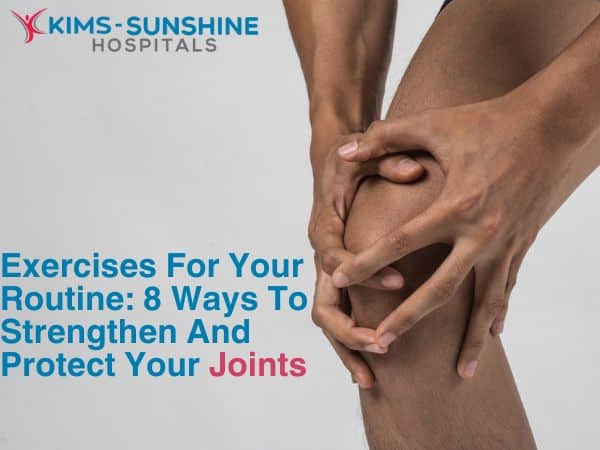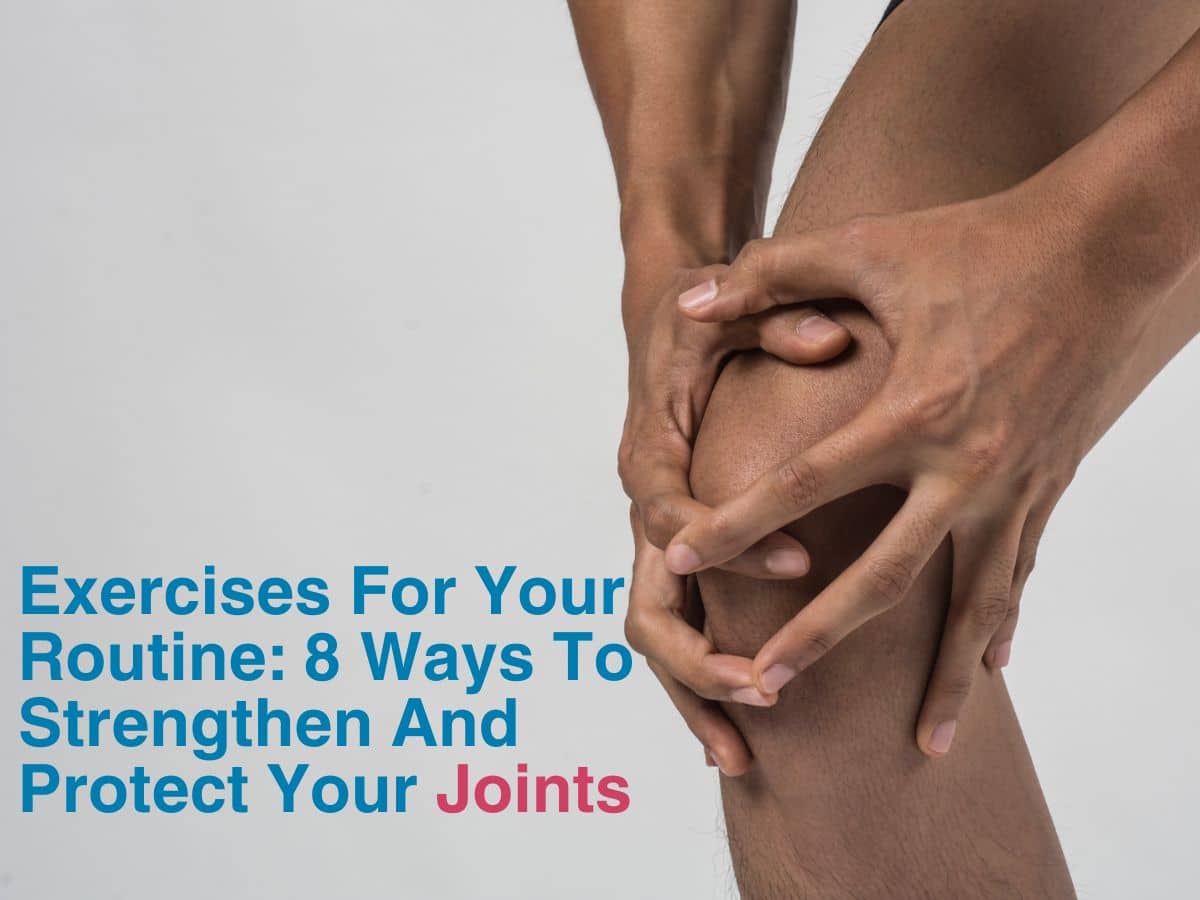
Exercises For Your Routine: 8 Ways To Strengthen And Protect Your Joints

Our body has a beautifully laid out system- consisting of bones, joints, muscles, organs, and skin- all melding together, yet fulfilling extremely specific roles in our system. Our joints are one such component, and they really help us with movement- all sorts in fact- bending, walking, sitting, dancing, doing gymnastics etc.
Such a wide range of movement can be preserved for many decades, only with proper joint maintenance and protection. There are so many advantages to doing this:
- To help with support – our weight needs to be borne by our joints right? We can help by maintaining a healthy weight.
- To improve functional mobility – continuing to do what we do everyday is a blessing!
- Being pain free – yes, exercising can help reduce chronic pain and inflammation.
- Strengthening the muscles – muscle health and joint health are closely related. You take care of both and you are totally sorted!s
- Retain or even improve quality of daily life
Let us look at different ways to do just that!
Joint-Friendly Workouts For Strength And Protection
Any low impact activity is a great addition to your daily routine.So, walking, swimming, doing some yoga, going for an invigorating swim, leg lifts, strength training, wall push ups are all really great ways to take care of your joints. There is no need for any high intensity workouts either. Along with keeping your joints healthy and mobile, they also help improve cardiovascular health by reducing high blood pressure, regulating blood glucose levels, reducing cholesterol levels and helping you sleep better. All of these are huge positives , aren’t they?
Exercise Tips To Prevent Joint Pain And Injury
Here are top tips for you:
- Always remember to do gentle stretches or a proper warm up session before you begin your exercise routine. This will help reduce lactic acid build up and reduce your chances of having to deal with painful cramps.
- Wear proper clothes, protective gear and well-fitting footwear.
- Using resistance bands to help change up your routine, and also to strengthen specific groups of muscles.
- Train one group of muscles first, and the next group the next day, so you don’t get too sore at the end of the day.
- Drink plenty of water so you don’t get cramps from dehydration.
- Always listen to your body- if you are feeling very breathless, then reduce the intensity.
- Take breaks as needed.
- Start slow, and build up to the necessary momentum, and don’t do it very suddenly.
Conclusion
Low impact exercises are the best for retaining and improving joint health- they do not place any undue strain and they will also provide you with a bunch of other health benefits. Also, always remember to eat well and drink at least 2 litres of water, every day. Aim to exercise for a minimum of 150 minutes every week. If you think you may get bored, join classes so you have company. Joint health is greatly dependent on good flexibility, coordination, strength, and stability in general.
Frequently Asked Questions
How can I strengthen my joints to prevent injuries?
By making sure you maintain your body weight, or losing extra weight, taking care of posture, stretching and warming up before exercise and cooling off after a good workout are different ways to prevent injuries.
What types of exercises are safe for people with joint pain?
Low impact exercises place much less strain on your joints, when compared to high impact activities like running. Pain does not mean you stop exercising altogether.
How can I protect my joints during high-impact activities?
Stretching before workout and cooling off afterwards is very crucial. Use hot compresses to help with aches, or even ice. Increase intensity slowly, and don’t go all out from the very beginning.
What are the benefits of low-impact exercises for joint health?
They can help heart health, improve blood circulation, reduce pain and inflammation, improve posture, strengthen joints, and help you sleep better.
Can strength training help in protecting my joints?
Yes, it will help improve muscle mass and health, which will in turn help with better joint support.

Dr. C.R. Nagarjuna
MBBS, DNB (Ortho), MNAMS, FIJR
Consultant Orthopaedic Trauma & Joint Replacement Surgeon Specialist






